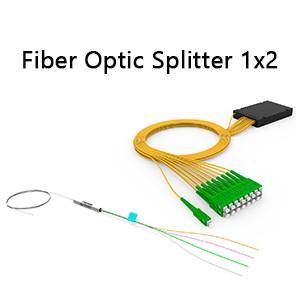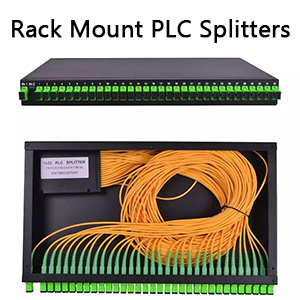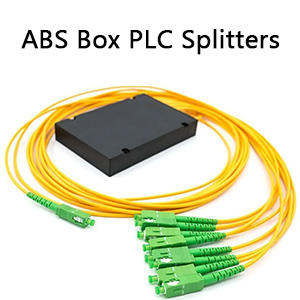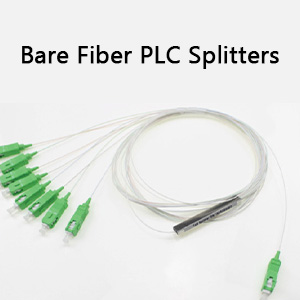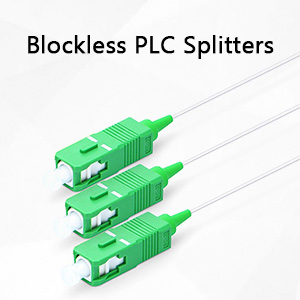The so-called fiber optic splitter refers to a passive optical device that can split or separate an incident light beam into two or more beams. There are two major categories of its working principle, one is FBT Splitter, and the other is PLC Splitter. So FBT Splitter VS PLC Splitter: What’s The Difference? Because the two categories have different advantages and disadvantages, it also makes users wonder how to choose, so let’s take a look at the information below!
HOW Does FBT Splitter?
FBT splitter is based on traditional technology, involving the fusion of several fibers from the side of each fiber. The fibers are aligned by heating them at a specific location and length. Due to the fragility of the fused fibers, they are protected by a glass tube made of epoxy and silica powder. Subsequently, a stainless steel tube covers the inner glass tube and is sealed with silicon. As technology continues to develop, the quality of FBT splitters has significantly improved, making them a cost-effective solution. The following table outlines the advantages and disadvantages of FBT splitters.
| Advantages | Disadvantages |
|---|---|
|
·FBT splitter is made out of materials that are easily available and low-price, so it is cheaper. ·Splitter ratios can be customized. |
·Restricted to its operating wavelength (850nm, 1310nm, and 1550nm). ·The maximum insertion loss will vary depending on the split and increase substantially for those splits over 1:8. ·Because an exact equal ratio cannot be ensured, the transmission distance can be affected. ·High Temperature Dependent Loss (TDL). ·Susceptible to failure due to extreme temperatures or improper handling. |
HOW Does PLC Splitter?
PLC splitter is based on planar lightwave circuit technology. It comprises three layers: a substrate, a waveguide, and a lid. The waveguide plays a key role in the splitting process which allows for passing specific percentages of light. So the signal can be split equally. In addition, PLC splitters are available in a variety of split ratios, including 1:4, 1:8, 1:16, 1:32, 1:64, etc. They also have several types, such as bare PLC splitter, blockless PLC splitter, fanout PLC splitter, mini plug-in type PLC splitter, etc. You also can check the article How Much Do You Know About PLC Splitter? for more information about PLC splitter. The following table shows the advantages and disadvantages of PLC splitter.
| Advantages | Disadvantages |
|---|---|
|
·Suitable for multiple operating wavelengths (1260nm – 1650nm). ·Equal splitter ratios for all branches. ·Compact configuration, smaller size, small occupation space. ·Good stability across all ratios.High quality, low failure rate. |
·Complicated production process. ·Costlier than the FBT splitter in the smaller ratios. |
FBT Splitter VS PLC Splitter: What’s The Difference?
a. Operating Wavelength
FBT splitter only supports three wavelengths: 850nm, 1310nm, and 1550nm, which makes its inability to work on other wavelengths. The PLC splitter can support wavelengths from 1260 to 1650nm. The adjustable range of wavelength makes PLC splitter suitable for more applications.

Figure1: Operating Wavelength Comparision
b. Splitting Ratio
Splitting ratio is decided by the inputs and outputs of an optical cable splitter. The maximum split ratio of FBT splitter is up to 1:32, which means one or two inputs can be split into an output maximum of 32 fibers at a time. However, the split ratio of PLC splitter is up to 1:64 – one or two inputs with an output maximum of 64 fibers. Besides, FBT splitter is customizable, and the special types are 1:3, 1:7, 1:11, etc. But PLC splitter is non-customizable, and it has only standard versions like 1:2, 1:4, 1:8, 1:16, 1:32, and so on.

Figure2: Splitting Ratio Comparision
c. Splitting Uniformity
The signal processed by FBT splitters cannot be split evenly due to a lack of management of the signals, so its transmission distance can be affected. However, PLC splitter can support equal splitter ratios for all branches, which can ensure a more stable optical transmission.

Figure3: Splitting Uniformity Comparision
d. Failure Rate
FBT splitter is typically used for networks requiring the splitter configuration of less than 4 splits. The larger the split, the greater the failure rate. When its splitting ratio is larger than 1:8, more errors will occur and cause a higher failure rate. Thus, FBT splitter is more restricted to the number of splits in one coupling. But the failure rate of PLC splitter is much smaller.

Figure4: Failure Rate Comparision
e. Temperature-Dependent Loss
In certain areas, the temperature can be a crucial factor that affects the insertion loss of optical components. FBT splitter can work stable under the temperature of -5 to 75℃. PLC splitter can work at a wider temperature range of -40 to 85 ℃, providing relatively good performance in the areas of extreme climate.
f. Price
Owing to the complicated manufacturing technology of PLC splitter, its cost is generally higher than the FBT splitter. If your application is simple and short of funds, FBT splitter can provides a cost-effective solution. Nevertheless, the price gap between the two splitter types is narrowing as the demand for PLC splitters continues to rise.
g. Size
FBT splitters typically have a larger and bulkier design compared to PLC splitters. They demand more space and are better suited for applications where size is not a limiting factor. PLC splitters boast a compact form factor, making them easily integrable into small packages. They excel in applications with limited space, including inside patch panels or optical network terminals.
Epilog
In general, although the appearance and size of FBT Splitter and PLC Splitter are similar, their working principles and specifications are different. For those who are still struggling with FBT Splitter and PLC Splitter, fiber-life recommends that you choose PLC Splitter instead of FBT Splitter, because the former is a reliable device that can achieve high split number and ideal size. For those who want to know more, you can visit Fiber-Life Store.

